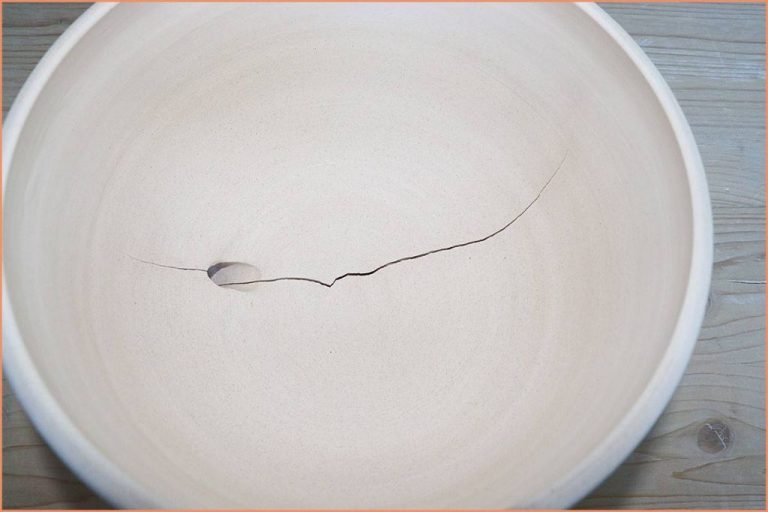What Kind Of Clay Is Food Safe?
Clay is a natural material that has been used for centuries to make pottery and dinnerware. With the popularity of artisanal baking and cooking rising, many home cooks are interested in using clay pots, baking dishes, and other clay items in their kitchens.
However, not all clay is made equal when it comes to safety for food use. The term “food safe” refers specifically to clay that has been determined safe for direct contact with food during cooking or storage.
Food safe clay is free from harmful contaminants and chemicals that could potentially leach into food. It meets FDA standards for lead and cadmium content. When properly fired and glazed, food safe clay provides an inert, non-porous surface for cooking.
This article will overview the types of clay that can be considered food safe, properties that make clay safe for food use, FDA regulations, and how to identify pots, dishes and cookware made from food safe clay.
Types of Clay
There are several common types of clay used in pottery and ceramics:
Terracotta: Terracotta is an orange or red colored earthenware clay that is known for its low firing temperature. It’s often used for pottery like flower pots, tiles, and decorative items. Terracotta clay contains high levels of iron oxide, giving it its distinctive reddish color when fired.
Earthenware: Earthenware is a common red clay body that is fired at lower temperatures than other clays. It’s a porous clay that allows air and moisture to pass through. Earthenware is used for bakeware, flower pots, vases and decorative items. It’s the most basic and oldest type of pottery.
Stoneware: Stoneware is a dense and durable ceramic clay that is fired at high temperatures around 2200°F. The high firing temperature makes stoneware non-porous and ideal for functional pottery like mugs, dishes, bowls and food storage containers. Stoneware clay comes in gray, brown and white varieties.
Porcelain: Porcelain is a white, translucent ceramic made by firing a pure clay body at extremely high temperatures. It’s highly vitrified, non-porous, and stronger than other ceramic clays. Porcelain is used for tableware, art objects and decorative items like figurines. Its high vitrification makes it ideal for food service.
Properties of Food Safe Clay
When determining if a clay product is food safe, there are a few key properties to look for:
Non-porous – The clay should be vitrified, meaning it has been fired at a high enough temperature to melt and fuse the silica particles, creating a non-porous surface. Porous clay can allow bacteria to get trapped, creating a risk of contamination.
Vitrified, lead-free glazes – Glazes applied to clay products should also be non-porous and free from lead and other toxic materials. Vitrified glazes are glossy, glass-like coatings that are impermeable to liquids. Lead glazes can leach lead into food and are never food safe.
A properly vitrified clay body and lead-free glaze will prevent absorption of food particles and bacteria. The non-porous surface also makes it easy to clean and sanitize with no risk of residues remaining trapped in the material.
FDA Regulations
The FDA has strict regulations regarding lead levels in ceramics and glazes intended for food use. Lead can leach from ceramicware into foods, posing a health risk. The FDA sets limits on the maximum amount of lead permissible in ceramic articles.
For a clay body to be considered food safe by the FDA, it must contain less than 0.5% lead by weight. Glazes are held to an even stricter standard – they must release less than 0.5 parts per million lead under testing simulating repeated use.
Additionally, the FDA requires all ceramicware manufacturers to perform lead testing on their products using detailed test procedures. Records of this testing must be kept on file should regulators request to review them.
Meeting the FDA’s lead standards is critical for marketing ceramics as food safe. Reputable clay and glaze suppliers will provide documentation showing lead testing results compliant with FDA rules.
Lead in Clay
Lead can be an issue with some types of clay, especially importing ceramic from countries with less regulation. Lead is a heavy metal that can leach from the clay into food and beverages when acidic foods are present. This is concerning as lead is toxic and can cause health problems even in small amounts.
Lead often makes its way into clay through contamination of clay deposits themselves or additives intentionally added to clay to improve workability and durability. Some glazes and pigments also contain lead.
To avoid lead exposure from clay, choose lead-free alternatives. Look for clay produced in countries with stringent standards like the US. Lead-free natural clay or polymer clay designed for food use is safest. Also, test homemade or decorated pieces with an at-home lead testing kit before using with food.
Unglazed vs Glazed Clay
Unglazed clay is clay that has not been coated with a glassy coating known as a glaze. Unglazed clay is considered more porous and absorbent than glazed clay. The porous nature of unglazed clay raises some safety concerns when used with food.
Unglazed clay can potentially leach lead and other minerals into acidic foods and liquids stored in them for long periods. The minerals from clay can dissolve into acidic substances they come in contact with. For short-term food storage and serving, unglazed clay is generally considered safe. But long-term acidic storage is not recommended.
Glazing clay provides a non-porous, glassy surface that prevents interaction between clay and food. Glazes protect against leaching of minerals from the clay body into food. Glazes are considered food-safe and allow long-term storage of both acidic and non-acidic foods.
However, some glazes may contain lead, cadmium and other toxic materials. It’s important to use lead-free glazes certified for food safety. Reputable clay manufacturers will provide documentation on lead levels and safety of their glazes.
In summary, unglazed clay provides an attractive, natural look but raises some safety concerns for long-term food storage. Properly formulated lead-free glazes are considered food-safe and allow versatile storage while maintaining aesthetics.
Clay Composition
The composition of clay determines its properties and safety for food use. Clays are made up of a variety of natural minerals that give clay its plasticity when mixed with water. The main mineral components are:
- Silica – This mineral makes up over 40% of most clays. It melts at extremely high temperatures and gives clay its hardness.
- Alumina – Aluminum oxide that increases plasticity and hardness when fired.
- Flux – Minerals like feldspar, magnesium, and calcium that lower the melting temperature of clay.
The ratio of these minerals affects the firing temperature needed to properly set and harden the clay. Food safe clays are often fired between 2100°F to 2300°F to fully vitrify and become non-porous. Any organic matter is burnt out and minerals fuse into a glassy matrix.
Additives are also frequently mixed into clay to achieve specific characteristics. For food safety, grog (pre-fired clay particles) may be added to reduce shrinkage and limit leaching of metals like lead.
Identifying Food Safe Clay
There are a few ways to identify if a clay is food safe:
Manufacturer Marks
Look for marks from the manufacturer stating the clay is “food safe” or “FDA approved.” Reputable clay brands will label their food safe products accordingly.
AP Certified Seal
The AP (Accepted Practices) seal indicates the product has been certified for food safety according to FDA standards. Only clays made in the US, EU, Canada, Australia, and New Zealand can apply for AP certification.
FDA Labeling
In the US, clay must be labeled “Not for food use” if it does not meet FDA standards. So the absence of this label typically means it is food safe.
Lead Testing Kits
Home lead testing kits can be used to check clay for unsafe levels of lead. Look for kits that can detect at least 10 ppm of lead.
Proper Use of Food Safe Clay
When using food safe clay, it’s important to follow proper usage guidelines to avoid potential health risks. Here are some tips for safely using clay that is labeled as food safe:
Avoid acidic foods and liquids – Clay is porous, so acidic ingredients like lemon, tomato, vinegar, and wine can cause the leaching of chemicals from the clay into food. Stick to neutral or low-acid foods.
Don’t oven bake – Firing clay at high temperatures can release toxic substances. Only use air-dry or low-temperature bake clay.
Handwash only – Clay is fragile so avoid putting it in the dishwasher. Gently handwash with mild soap and avoid abrasive scrubbing.
Don’t use with cracks – If the clay develops any cracks, chips or blemishes, stop using it. These can harbor bacteria and also increase leaching.
Store properly– Keep clay completely dry and avoid extreme temperature fluctuations. Improper storage can lead to cracking.
Following these precautions allows you to safely enjoy the benefits of cooking and serving food in beautiful, natural clay dishes.
Conclusion
In summary, determining if a clay is food safe depends on several factors. The clay composition, lead levels, type of glaze, and proper use are all important considerations. When shopping for clay, look for reputable brands that specifically label their products as food safe. Carefully read ingredient lists and instructions for use. Avoid heavily dyed or improperly fired clay, as these may leach chemicals. Also be wary of vintage or handmade clay pieces, as lead levels may be higher. With the proper research and precautions, high quality clay can be safely used for baking, cooking, and storing foods. Always inspect clay for chips and damages before each use. With mindful choices, clay can be an eco-friendly and versatile addition to any kitchen.


